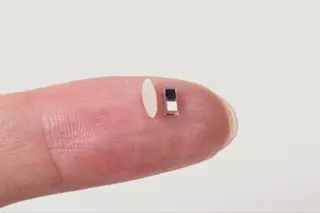Harvard scientists have announced a breakthrough that could eventually allow millions of diabetics to shed the yoke of daily insulin injections. It took over 15 years of trial and error, but researcher Douglas Melton and his team have discovered a method to transform human embryonic stem cells into insulin-producing cells which can then be injected into the pancreas. The discovery has generated a new wave of momentum in the field, with research labs across the country already working to replicate and build upon Melton’s results. "I think we've shown the problem can be solved," Melton told National Geographic
Thursday.
The researchers developed a 30-day, six-step process that transforms embryonic stem cells into pancreatic beta cells, the same sugar-regulating cells that are destroyed by the immune system of people with type 1 diabetes. The new cells can read the levels of sugars that enter the body after, say, a meal, and ...













